 The late modern era is a period filled with love for the woman, who was thought to be some unearthly, delicate creature. This was at the same time a great and awful period for women. And as usual, fashion is the best indicator of this time – of any time actually and this one in particular. You can look at the clothing from a certain historical era and understand a lot about the period, its beliefs, rules, traditions, etc. So, what does the late 19th – early 20th century fashion look like? What garments were popular in the late modern era and why?
The late modern era is a period filled with love for the woman, who was thought to be some unearthly, delicate creature. This was at the same time a great and awful period for women. And as usual, fashion is the best indicator of this time – of any time actually and this one in particular. You can look at the clothing from a certain historical era and understand a lot about the period, its beliefs, rules, traditions, etc. So, what does the late 19th – early 20th century fashion look like? What garments were popular in the late modern era and why?
The late modern era is a very feminine period. It was traditional to think that a woman didn’t have any hardship or problems in her life, she didn’t have to think a lot, to solve tasks and earn money. She was a nymph, a mermaid, something mythical and fragile. All that we can see in the fashionable outfits from the time.
Extremely expensive dresses
Today, we mostly dress in comfortable clothing, much comfier than our grams and great-grandmothers did. But why did women dress so beautifully and gracefully in the late 19th – early 20th century? The answer is because men could show off their wealth and status this way. The more jewels and embellishments his wife’s gown had, the more assured he was of himself.
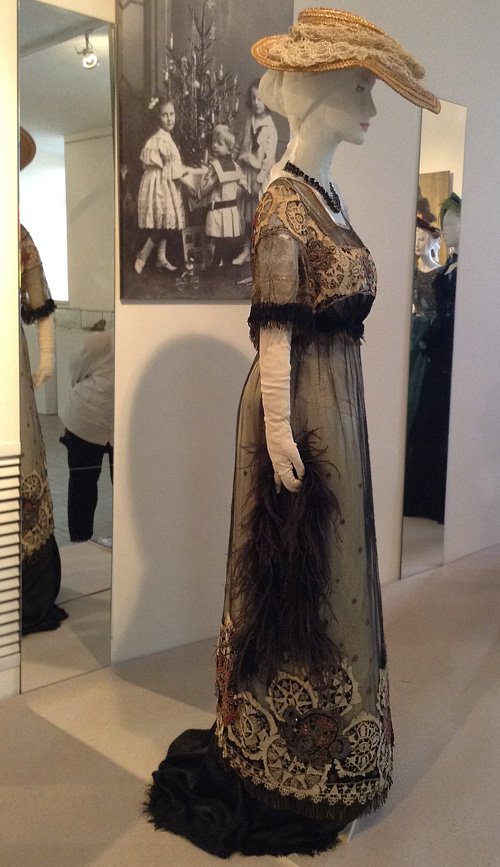
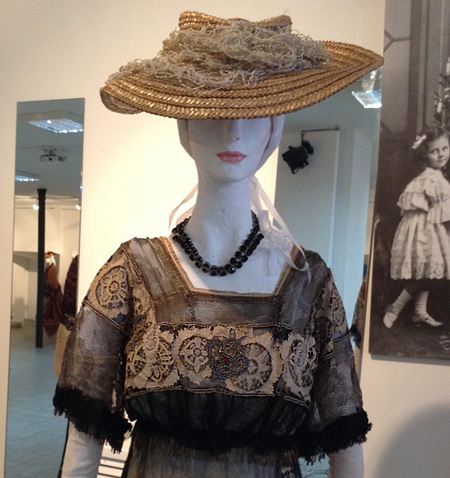
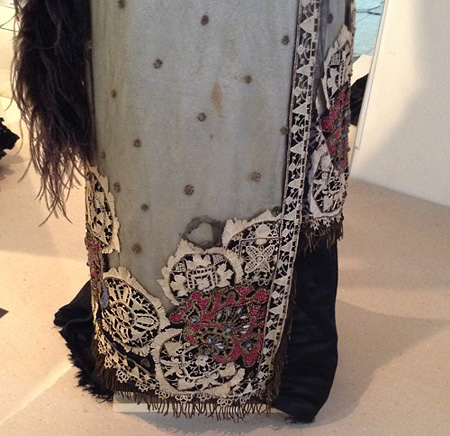
Women’s delicate horse riding dress, 1911. Dress, gloves, hat, and beaded necklace. The Renaissance gown has a high waist and is decorated with beige lace, red beads, and blue gems
A female dress could cost as much as 20-30 cows, only 7-10% of people could afford such expensive dresses. They were often adorned with gems, gold and silver buttons or clasps. Sometimes, women even caused their husbands to become bankrupt because they spent too much on clothing. But men had to pay all that money for their women’s clothes because it was a display of their status.
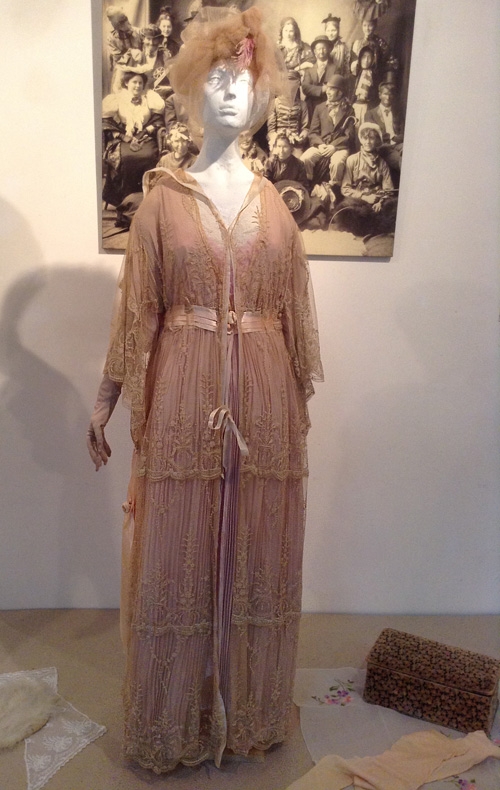
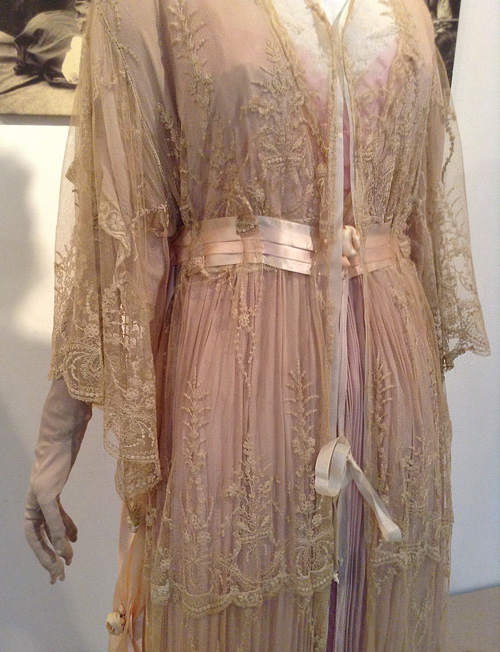
Morning gown worn by the woman of upper class at home, France, 1900-1905. Undergarment made from the frilled fabric, dressing gown made from lace, belt made from moire ribbon, headdress, and gloves
The saddest thing about it was that these dresses were often worn only once or a handful of times. Some women, mostly royals, literally had to wear each gown strictly one time. Though, there were particular reasons for that, except for the status of a woman. The fabrics used to make these dresses often were so sheer and fragile that they didn’t withstand washing, ironing, or even being used for several times. It was almost impossible to get rid of some stains and smears as well. So, used gowns were thrown away, remodeled, or presented to poorer women.


Sumptuous attire for receptions, France, 1890-1892. Long dress that consists from several layers with short puffy sleeves and ornate belt, headdress, necklace, and high gloves. The dress is decorated with delicate lace, patterns on the fabric (on sleeves), and ornate riband embroidered with gold and silver threads and adorned with gems
Fashion hardships of the time
The women’s attire from the late 19th – early 20th century looks so sophisticated and delicate that you can easily become fascinated with it. But the image of such an unearthly creature was rather hard to maintain. Women had many layers of clothing under her ornate gown – chemises, a corset, several petticoats, crinolettes, bustles, etc. Let’s not forget that they weren’t allowed to leave their house without gloves, a headdress, a parasol – these were the obligatory accessories of the time.
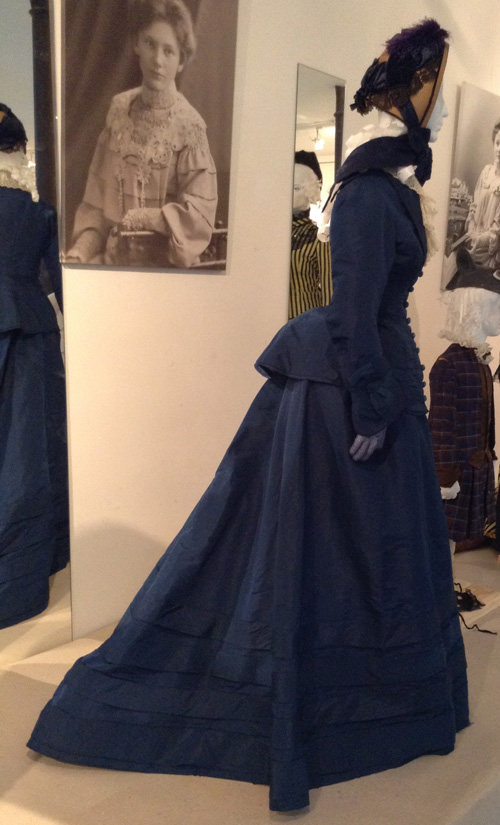
Female costume for walking or visiting state institutions, Holland (the Netherlands), 1870-1875. Long skirt with bustle; tight-fitting bodice; straw hat with ostrich feathers and lacy underside tied under the chin with a long satin ribbon. The collar – handmade lace
There were a lot of rules a woman had to follow. The outfits were uncomfortable, they restrained movements, but no one cared. She had to be beautiful, it was her sole purpose. Often, men understood how hard it was for women. That’s why males helped the ladies to go down the stairs, held the doors open for them, assisted them during the walk to prevent them from slipping and falling down. These etiquette rules gained popularity due to the fashionable outfits of 19th-century women. People simply had no other choice than to follow them.
Personal influence on fashion
Very often, personalities influenced fashion. For instance, at one time, it was typical for women to use black dresses and accessories as visiting gowns. It didn’t mean a woman was in mourning, it was just a fashion whim. But there was a background explanation to that style.
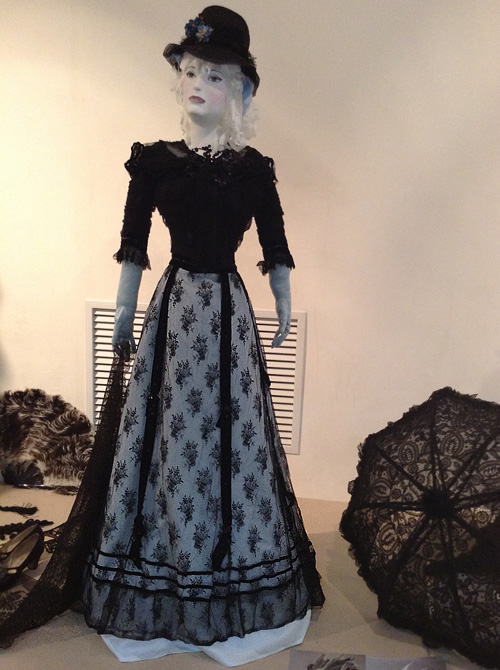
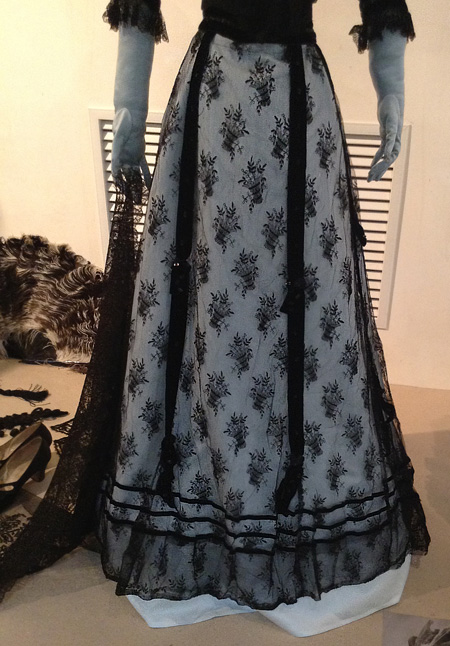
Female walking suit, Ukraine, 1908. Long skirt, blouse, hat, gloves, and lace scarf. The skirt is made from blue silk and embellished with black ribbons; the top layer of the skirt is made from black lace. The blouse is adorned with a bow, sequins, and small beads. The hat is decorated with flowers made from blue velvet
The thing is, Queen Victoria lost her husband early and she vowed to wear black clothes to mourn him. For about 20 or 30 years, she wore black dresses. The court always imitated the ruler’s clothing style, so the court ladies started to wear black as well.
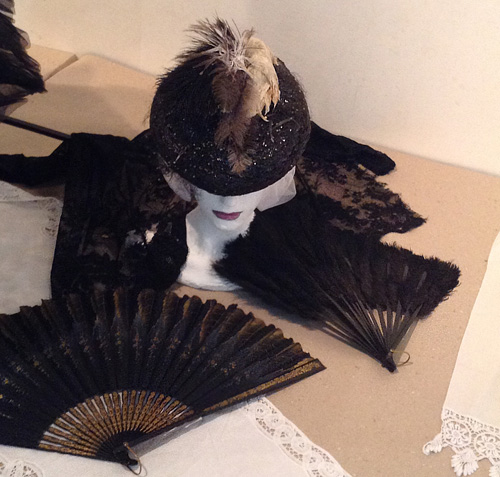
Women’s accessories, the beginning of the 20th century. Hat decorated with feathers and sequins, lace scarf, and feather fans
Also, black mourning brooches became trendy at the time. Actually, a lot of garments and accessories were black then – shoes, bags, fans, hats, and other items.
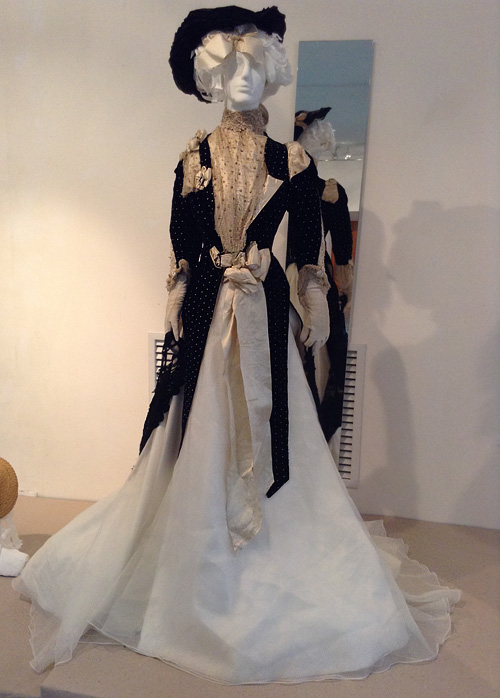
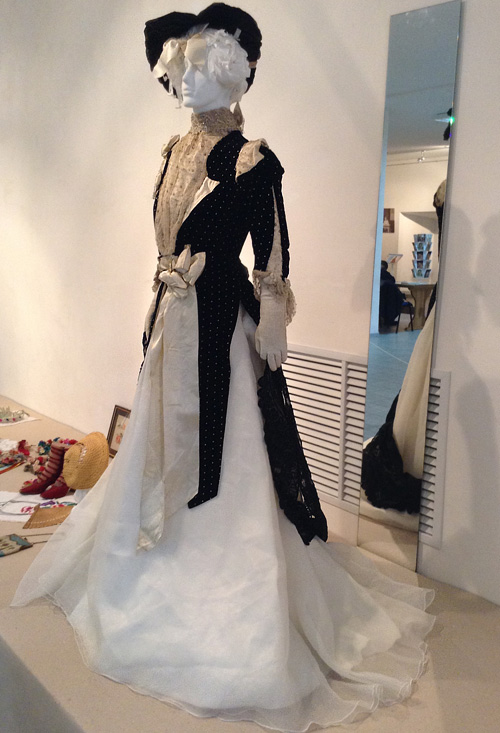
Female dress for special occasions, US (J.W.Morris), 1890-1990. Skirt, blouse, jacket, gloves, and hat. The skirt is made from white satin and gauze; was worn with a bustle. The blouse is made from silk and decorated with pearls; its stand-up collar is embellished with a lot of pearls. The design of jacket is similar to tailcoat. It is made from black velvet and adorned with small and large pearls, ribbons and bows. The hat is black, decorated with white and beige ribbons
Easy delivery
It’s hard to believe now but in the late 19th century, it was comparatively easy to order clothing, fabrics, lace, and any other haberdashery items from abroad. Ladies either ordered gowns or any needed stuff to sew a dress. People traveled a lot at the time – thanks to the newly built railway – and there were no borders, so wealthy people bought these things and could get practically any fashionable dress design.
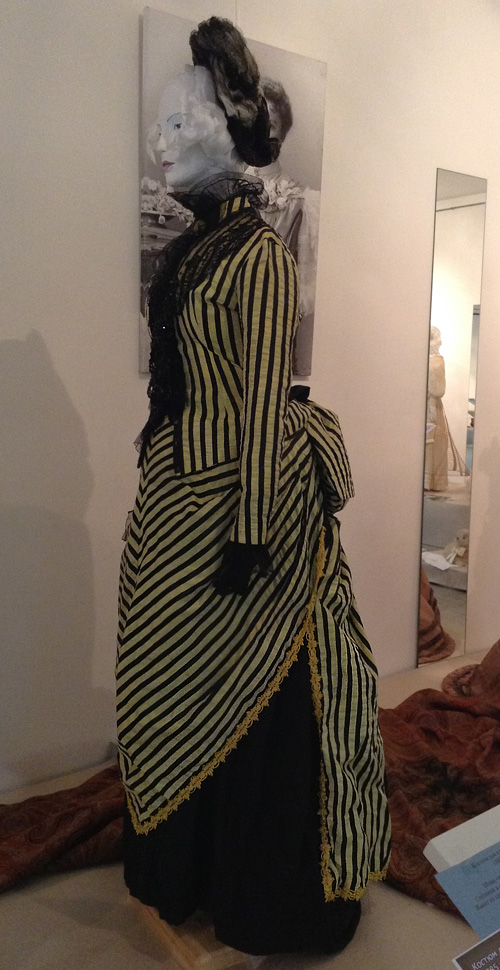
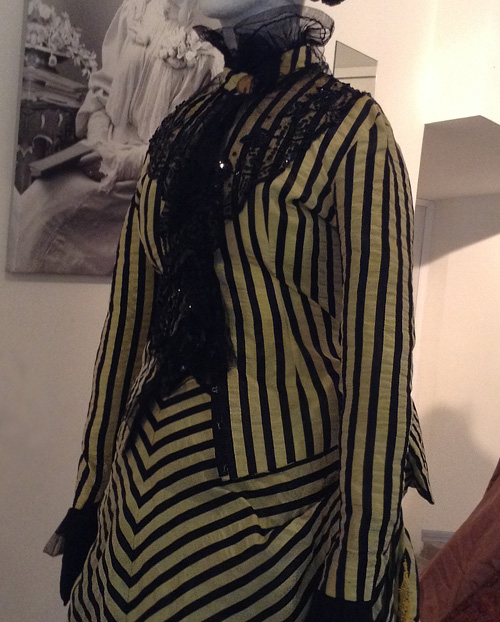

Women’s walking suit, Germany, 1886. Skirt of beautiful design with large bow on the back, black petticoat, embellished bodice, gloves, and hat. The clothes are made from silk. The bodice has a delicate lacy collar and front
Some fabrics and jewelry pieces (like Venetian glass bead necklaces, corals, or pearls) traveled thousands of miles before they got to the final destination.
The late modern period was a very special time, as well as the fashion at the end of the 19th – beginning of the 20th century. This era gave us a lot of gorgeous clothing articles we still admire in the museums. But at least we don’t have to become bankrupt because of buying too many dresses anymore.


